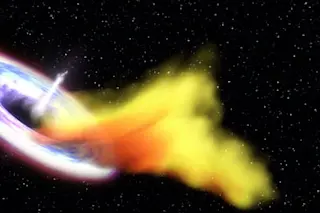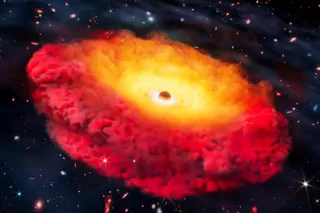No object in space is more mysterious—and more psychologically menacing—than a black hole. Once known as a frozen star, a black hole is formed when a massive star burns out and collapses upon itself, ultimately producing gravitational energy so powerful that not even light can escape from it. Although physicists can infer the existence of black holes in space, they cannot directly observe them. Yet making mini black holes may be possible when the world’s largest particle accelerator—the Large Hadron Collider (LHC)—goes online outside Geneva, Switzerland. At the heart of the new machine is a phenomenal 17-mile circular tunnel where particles will smash together at nearly the speed of light, producing temperatures 100,000 times hotter than the core of the sun. Physicists will observe the collisions not only for clues to fundamental constituents of matter, hidden dimensions, and the elusive Higgs boson—the hypothetical particle that gives matter its heft—but also ...
The Extremely Long Odds Against the Destruction of Earth
Don't be too concerned that the world’s largest particle accelerator is about to go online.

Newsletter
Sign up for our email newsletter for the latest science news
More on Discover
Stay Curious
SubscribeTo The Magazine
Save up to 40% off the cover price when you subscribe to Discover magazine.
Subscribe













